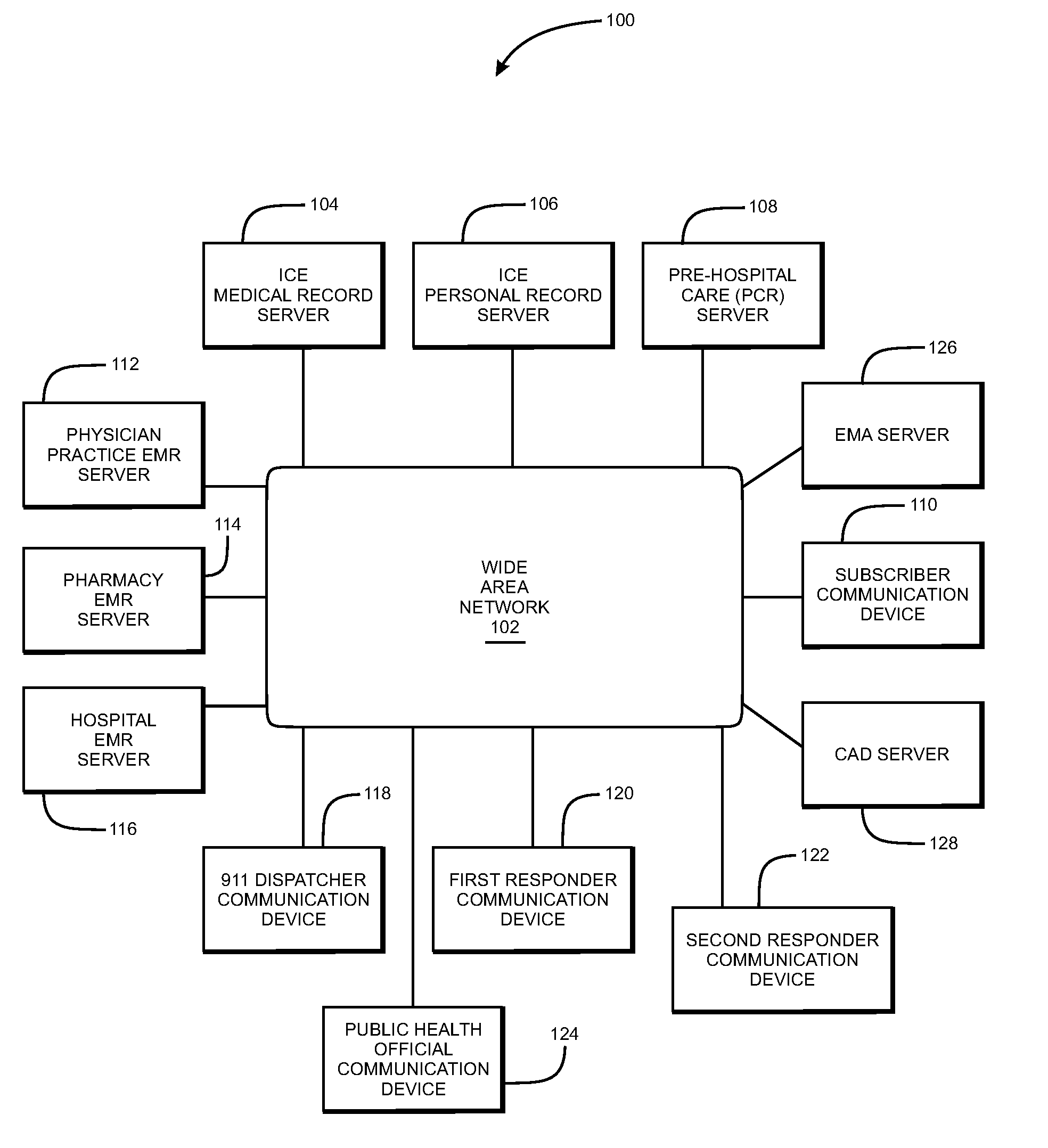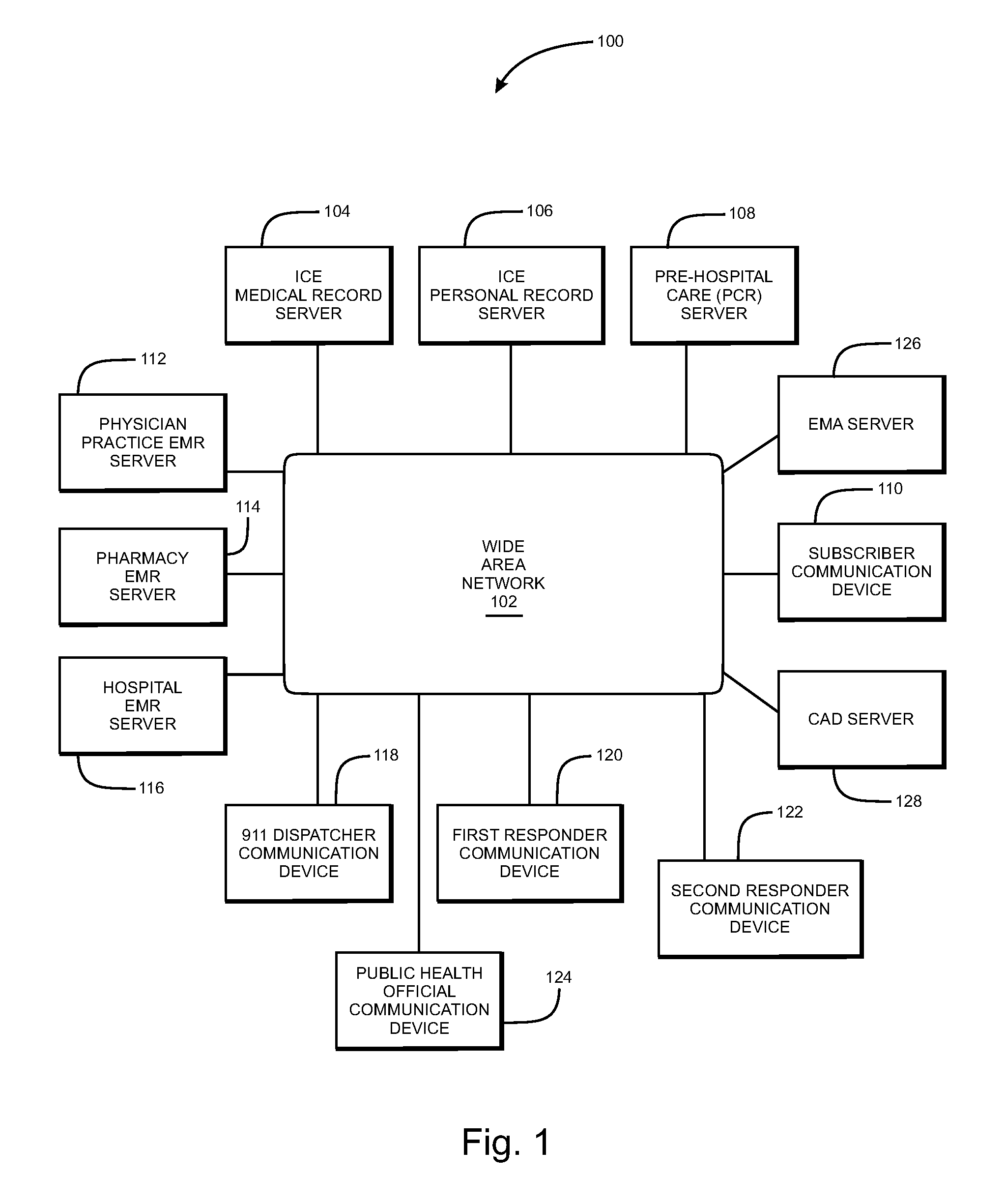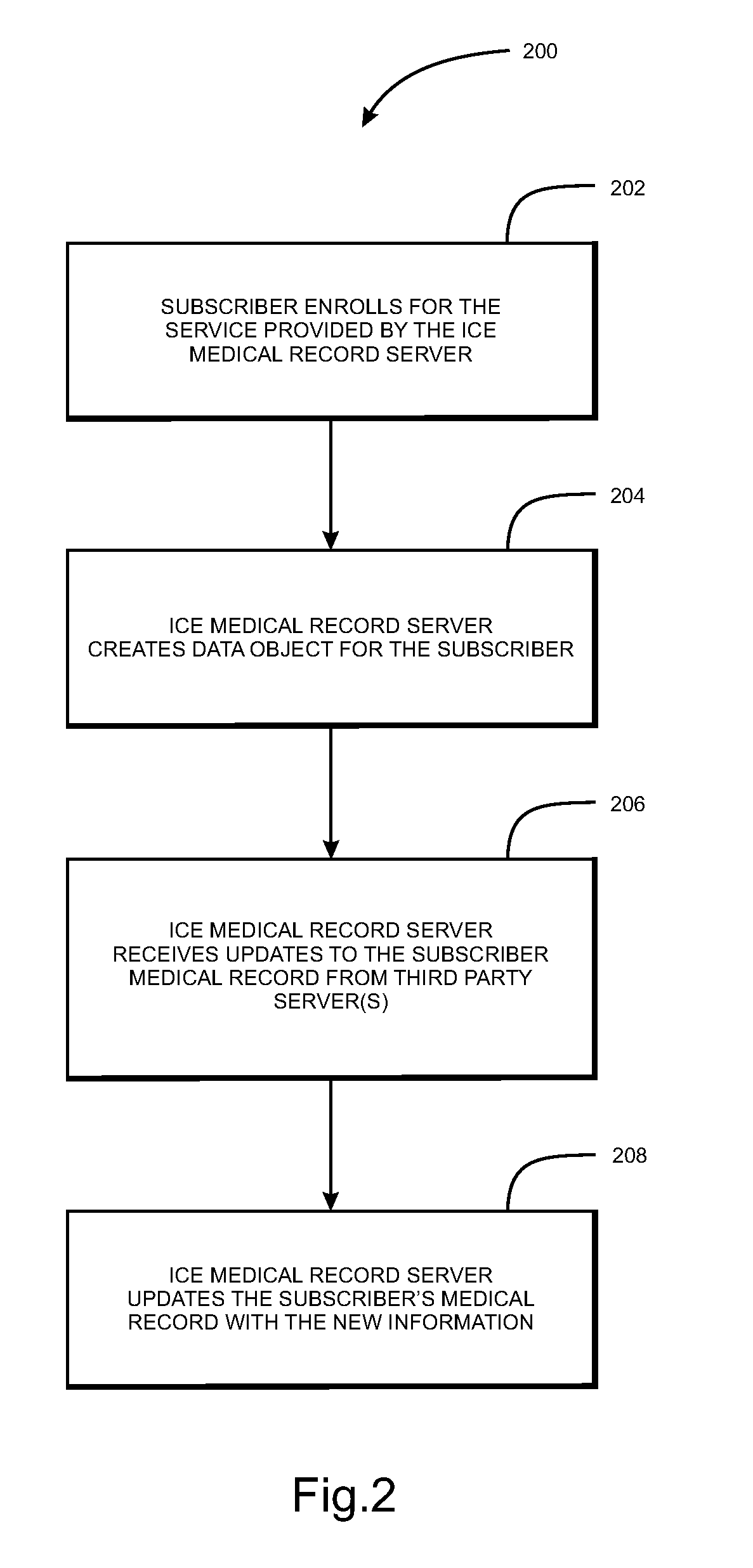System and method of aggregating and disseminating in-case-of-emergency medical and personal information
a medical and personal information and system technology, applied in the field of information management systems, can solve the problems of unconscious patient, inability to provide such medical information to a first responder, and patient may not be able to provide accurate information
- Summary
- Abstract
- Description
- Claims
- Application Information
AI Technical Summary
Benefits of technology
Problems solved by technology
Method used
Image
Examples
Embodiment Construction
[0041]FIG. 1 illustrates a block diagram of an exemplary communication system 100 in accordance with an embodiment of the invention. In summary, the communication system 100 includes one or more servers adapted to receive in-case-of-emergency (ICE) medical and personal information related to subscribers, and provide such information to authorized requesting parties, such as first responders, second responders, public health officials, emergency management officials, subscribers, and persons designated by subscribers. The communication system 100 comprises a wide area network (WAN) 102, such as the Internet, to facilitate the communication of information between the various entities of the system 100.
[0042]In particular, the communication system 100 comprises an ICE medical record server 104 for storing medical history information of subscribers, and providing the information to authorized parties, such as first responders, upon request. For example, when a subscriber is in a medical...
PUM
 Login to View More
Login to View More Abstract
Description
Claims
Application Information
 Login to View More
Login to View More - R&D
- Intellectual Property
- Life Sciences
- Materials
- Tech Scout
- Unparalleled Data Quality
- Higher Quality Content
- 60% Fewer Hallucinations
Browse by: Latest US Patents, China's latest patents, Technical Efficacy Thesaurus, Application Domain, Technology Topic, Popular Technical Reports.
© 2025 PatSnap. All rights reserved.Legal|Privacy policy|Modern Slavery Act Transparency Statement|Sitemap|About US| Contact US: help@patsnap.com



